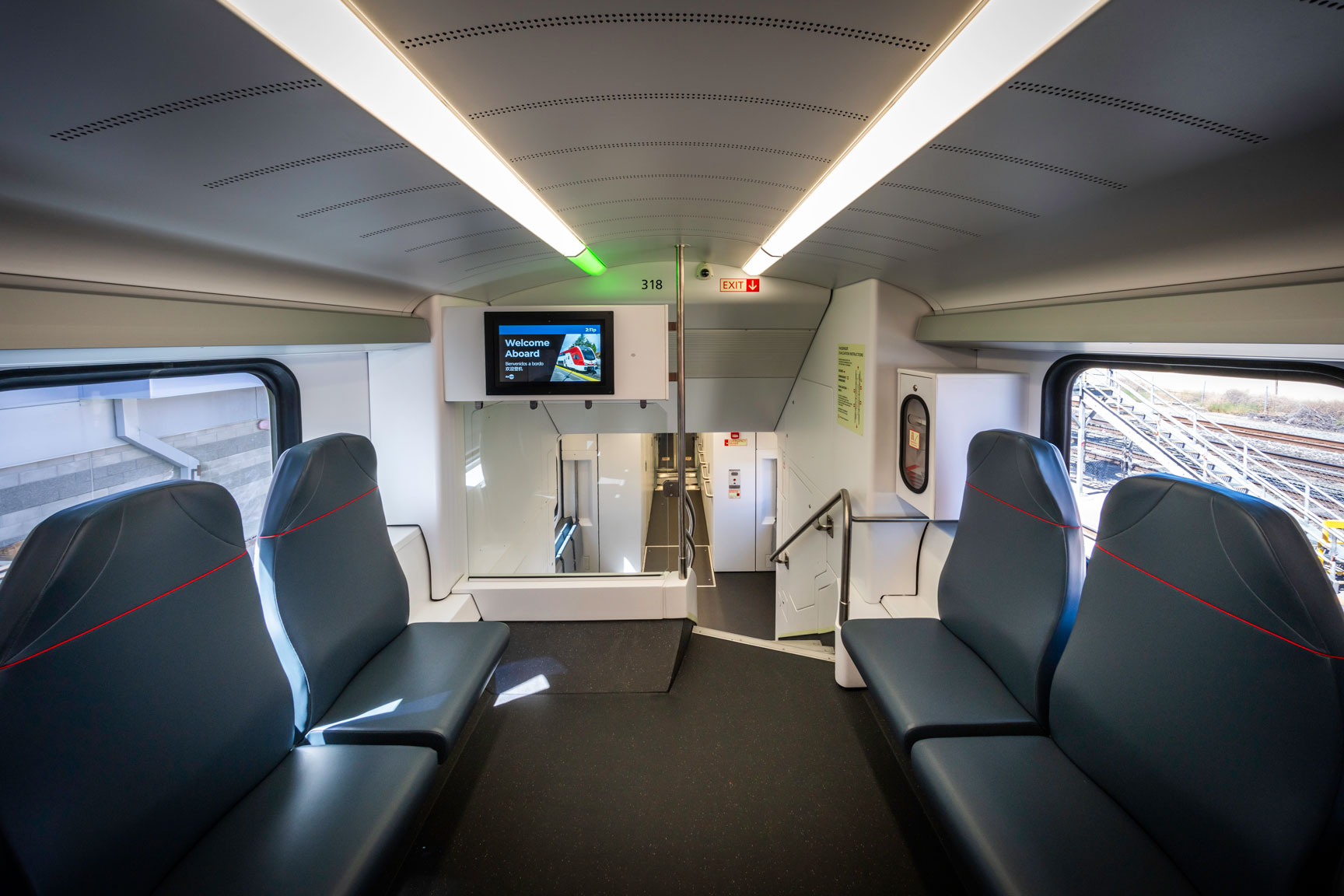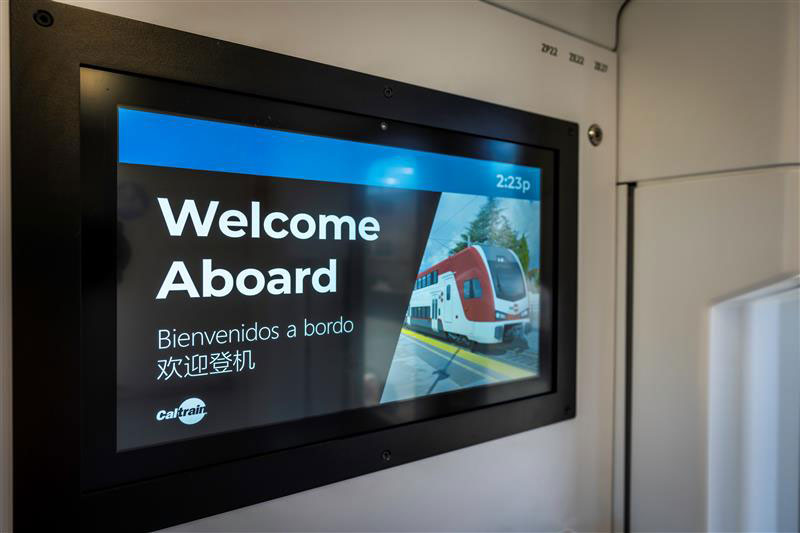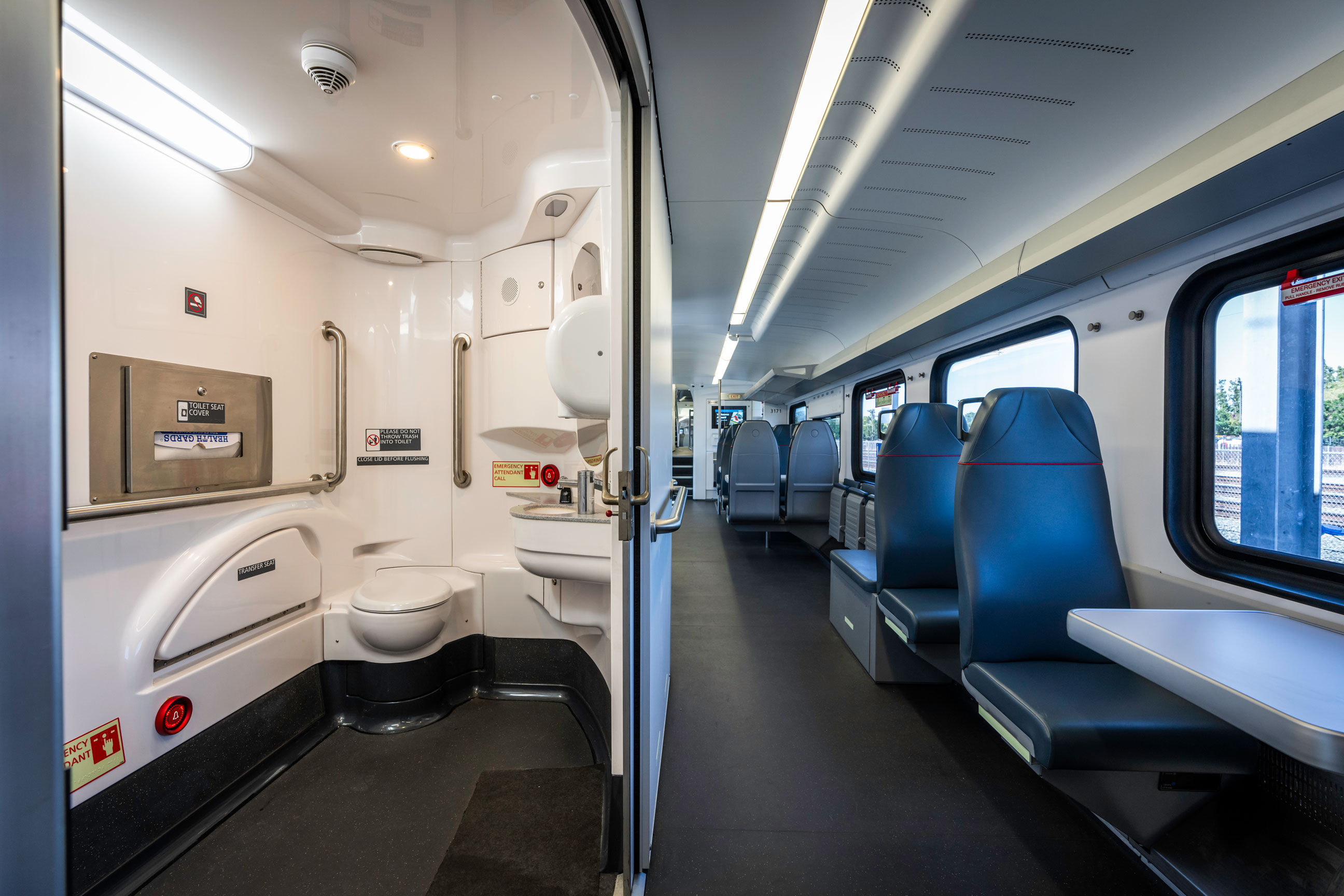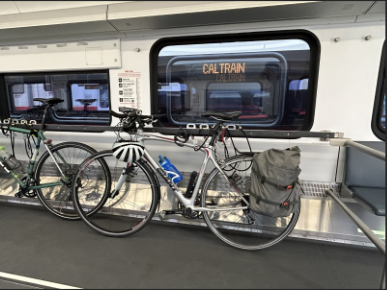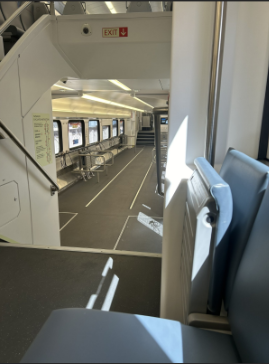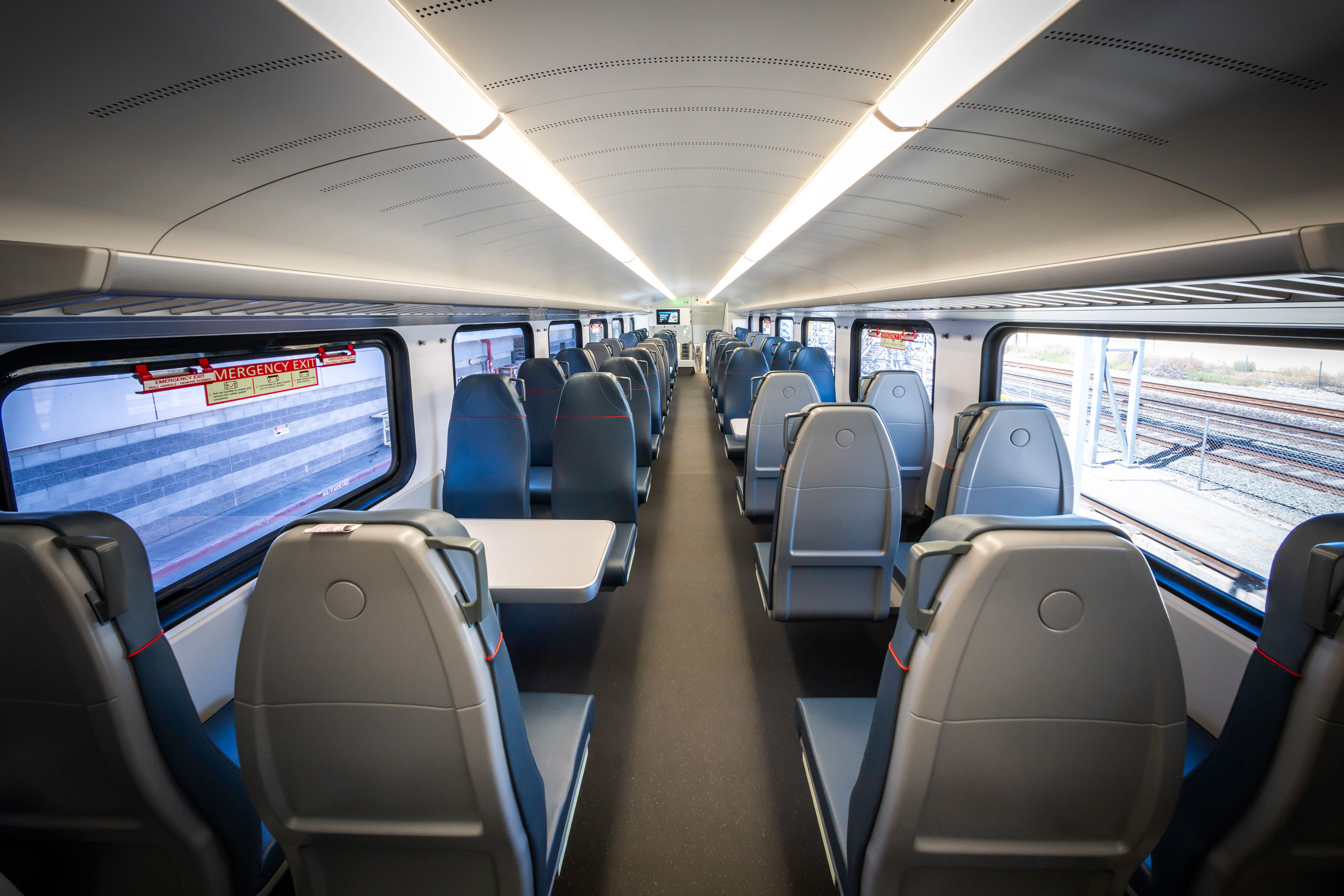Service
Why are some stations (San Bruno, San Carlos, etc.) receiving less service?
The new service schedule is reconfiguring our local, limited and express service. However, no station will receive less service than it currently receives. Information at caltrain.com/go.
Will weekend service include any express or limited trains?
With faster travel times, all stations have half-hourly hourly service on the weekends. There are no plans to provide express or limited service at this time.
Will the new trains be level with the raised mini-high ramps on the platforms?
Yes, except for the following stations: 22nd Street, Broadway, Stanford and College Park.
Caltrain is committed to expanding meaningful access to the system. Fourteen new accessible ramps (known as mini highs) will be installed in 2024 at eight stations to provide reliable and accessible service to individuals who use a wheelchair, mobility device or are unable to use the train stairs. The eight stations include: Bayshore, Burlingame, Hayward Park, Belmont, California Avenue, San Antonio, Lawrence, and Tamien.
Any plans to add even faster express service?
Not at this time.
If there is an issue with the passenger information screens on the electric train – who can I contact?
If you see something amiss with the info screens - please contact our Customer Service who can report it to the correct team. Please provide the train number, the train car number (in large numbers inside the car) and the date/ time. If you have screenshots or video, they are appreciated and can be emailed to customer service if required.
-
Fastest channel: call Customer Service at 1.800.660.4287. Hours M-F: 7am-7pm and Weekends & Holidays: 8am-5pm
-
Not a fan of talking on the phone? Use the Caltrain feedback form on our web site and Customer Service will log the issue.
Why do the pedestrian crossing gates sometimes stay down longer with the new electric trains? Does this mean I could miss my train if I’m waiting at the crossing?
Trains stopping on the crossing sensors may trigger the gates to stay down longer. In some instances, trains on an adjacent track or North/South could have a residual effect on the pedestrian/grade crossings. Since the train departs at the advertised scheduled time from the station. Please arrive early at the station, purchase your ticket, pay for parking and be ready to board the train on the scheduled time. At locations with gates, allow enough time to cross the boarding area before the departure time.
Electric Trains
How fast is the electric train compared to diesel locomotives?
The new fleet can accelerate and decelerate faster than the diesel fleet, allowing trains to reach top speed in under a minute. Local trains will run 24 minutes faster while express service between San Francisco to San Jose will take 60 minutes.
How many different configurations will Caltrain run? How many people will it carry?
Each set will be 7 cars, 2 bike cars, one restroom car, 2 cab cars and two coach cars. There are 675 seats on each 7-car trainset. The car with the onboard restroom can be boarded at the blue square on the platform designated for passengers needing assistance.

What will the end-to-end time savings be with the new trains?
Compared to the last schedule before Electrification, Express trains will be 5 minutes faster while making 50% more stops and Local trains will save 24 minutes.
Is there Wi-Fi on Trains?
Wi-fi will only be available on the new electric trains. Connect to the Wi-Fi channel Caltrain_Wi-Fi, accept the terms and conditions, and click “Connect”. There are FAQ on the Wi-Fi landing page, including troubleshooting steps.
If you experience a Wi-Fi issue that you cannot resolve, please use the troubleshooting steps first. If reconnecting or troubleshooting doesn’t resolve the issue, you may contact Customer Service to report the issue. Customer Service does not offer technical assistance for Wi-Fi, but we can log your issue with our vendor.
Customer Service: 1.800.660.4287
-
When contacting us, please include:
-
Train number
-
Train car number you are occupying, which is a four-digit number located at the end of the passenger compartment.
-
Time of internet issue.
-
Last station passed, if known.
-
Device type used (Android/iOS/ Google phone, PC or Apple laptop, etc.) Make/model and OS version.
What are the accessibility features?
The new trains will feature automated passenger announcements (visual and audio) and priority seating areas on each car. The bathrooms have been designed to maximize accessibility. Improved exterior signage on front & side of train for easy identification.
What’s the difference about the interior of the new electric trains?
The interiors now feature outlets at nearly every seat, as well as an improved climate control system. There are passenger information screens in each car. The new seats and floors are also easier to maintain.
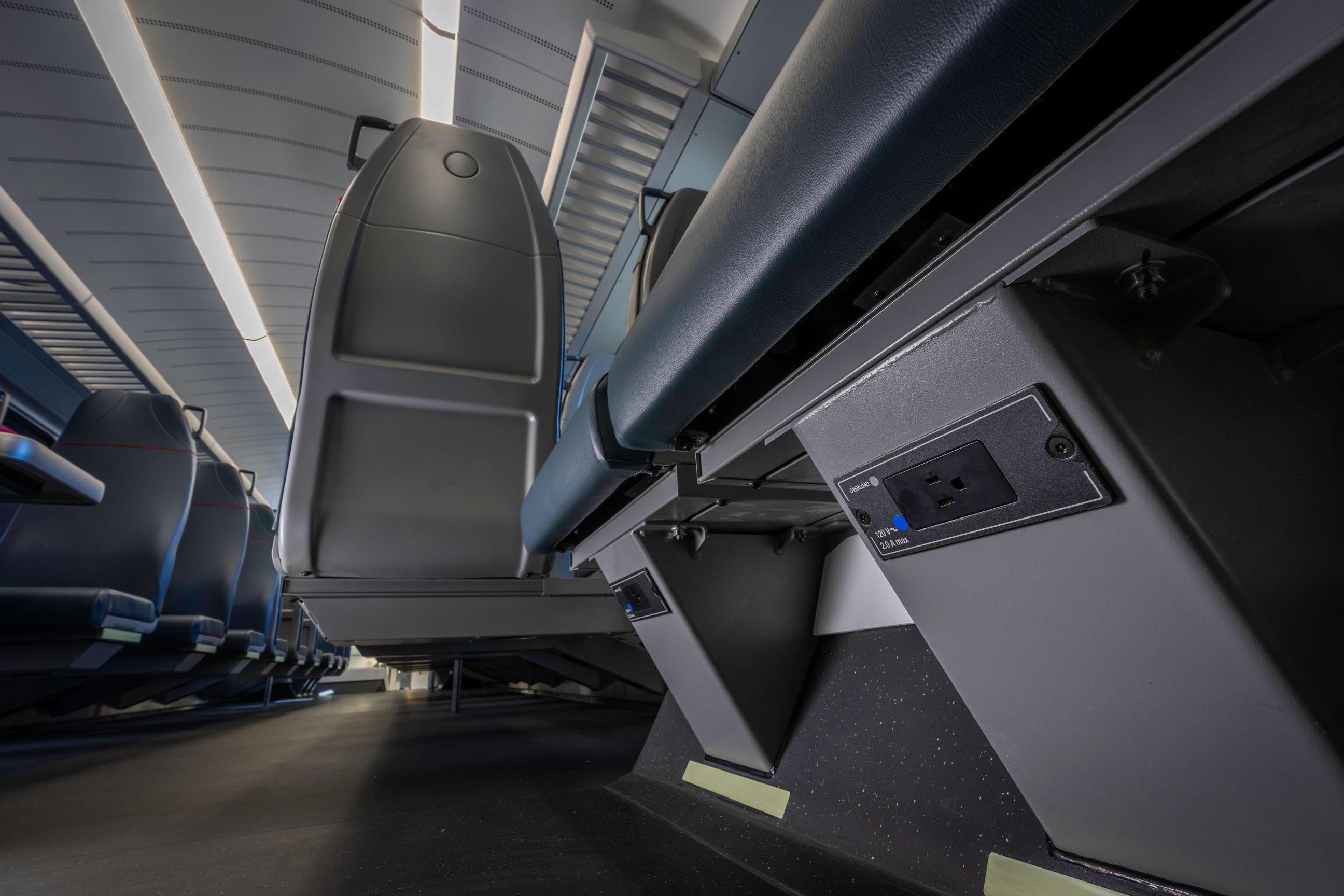
Where are the restrooms located? Every car, every other car, or something else?
There is one restroom per trainset. It’s located on the second car from the north end of the train, and there is an exterior icon on the train car to indicate it is the restroom car. Additionally, decals inside the train help passengers easily locate the restroom. The decision to have one restroom per trainset was made after extensive public input on the overall train design, including feedback from the general public, Citizens’ Advisory Committee and the Caltrain Board. At decision time, Caltrain was experiencing high ridership, with standing room only during peak periods. Space for people – standing or sitting was prioritized in the design. The final design recommendation also included two bike cars and one bathroom which take up space that might have been used for additional standing or seating spaces.
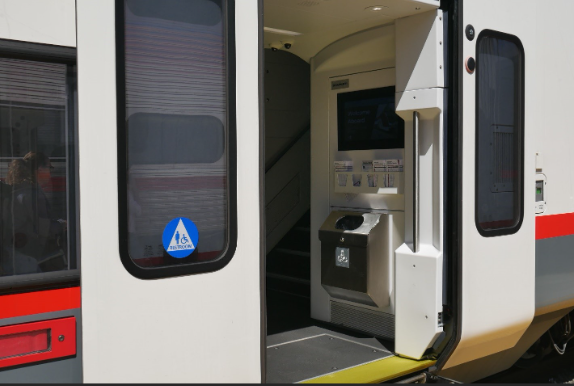
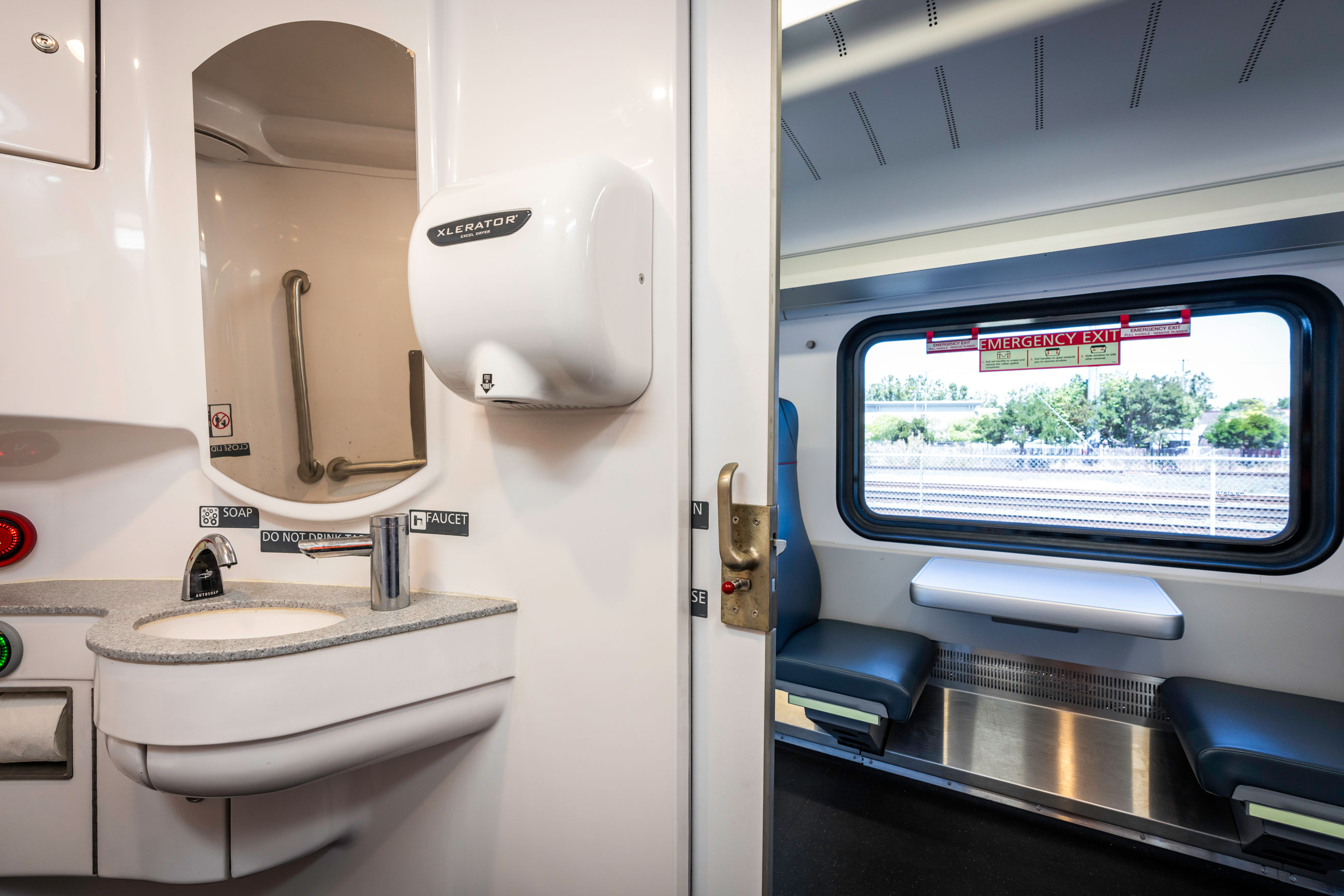
Will the doors have a button to press to open like KISS trains in Switzerland, so that the doors stay closed and don't waste AC?
No, doors will open at every station to allow easy hands-free boarding for all passengers.
Will the live tracking online be more accurate?
Yes, our map has been updated! The "Live Map" on Caltrain.com now uses a real-time data feed, which allows us to share up-to-date train locations with application developers. The map refreshes every few minutes to show the latest information. However, because train locations are updated between these refresh times, the displayed positions may not always reflect the exact, current location. We’re continuously working to improve accuracy and keep you informed.
What will be the bicycle capacity with the new electric trains?
The new electric trains will include 2 bike cars, providing a total of 72 bike spaces per train set.
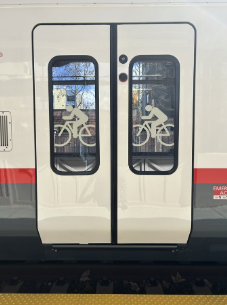
What is the onboard bicycle storage design?
The stacking storage design option, which maximizes capacity and is similar to diesel train design, was selected for the electric trains.
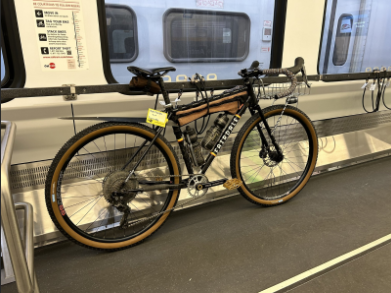
Over the course of three years, Caltrain received feedback on the onboard bicycle storage design options. Input was taken from discussions with local bike advocacy groups; an online poll; station outreach where riders could try out the bike storage options; comments though the website; social media; as well as emails, phone calls, and other in-person engagements, such as a joint Citizen’s Advisory Committee/ Bicycle Advisory Committee workshop.
What happens if the bike car is full when I want to ride Caltrain?
If you have flexibility in your travel times, consider taking trains just before or after your usual time. During peak hours, trains run every 15 to 20 minutes at 16 stations. Local service is now 23 minutes faster between San Francisco and San Jose, with all other services taking less than an hour. For more details on specific stations, please visit https://www.caltrain.com/go.
For those who only need a bike on one end of their journey, Caltrain offers numerous alternatives for bikes and scooters, such as bike valet, bike rooms, and eLockers.
-
Secure bike parking: Caltrain has over 300 eLockers available at 22 stations, with more coming in early 2025. eLockers are only 5 cents per hour, and first-time users of the BikeLink app will receive 100 free hours.
-
Controlled access bike rooms are available at San Francisco, Palo Alto, and Mountain View stations, with more coming in 2025.
-
Bike and scooter share: BayWheels bike share is available in San Francisco and San Jose. Other bike and scooter share programs are available at select stations.
If we do not have on-board bike capacity, we encourage you to submit a bike report here. This will help us identify greater service needs and use that information to improve.
How will bike riders monitor their bike?
There are seven seats in each bike car and 10 seats surrounding the bike car on the mezzanine level.
There is no live monitoring of the bike car. E-lockers are available at most stations for secure storage. Electric trains carry 72 bikes per train set.
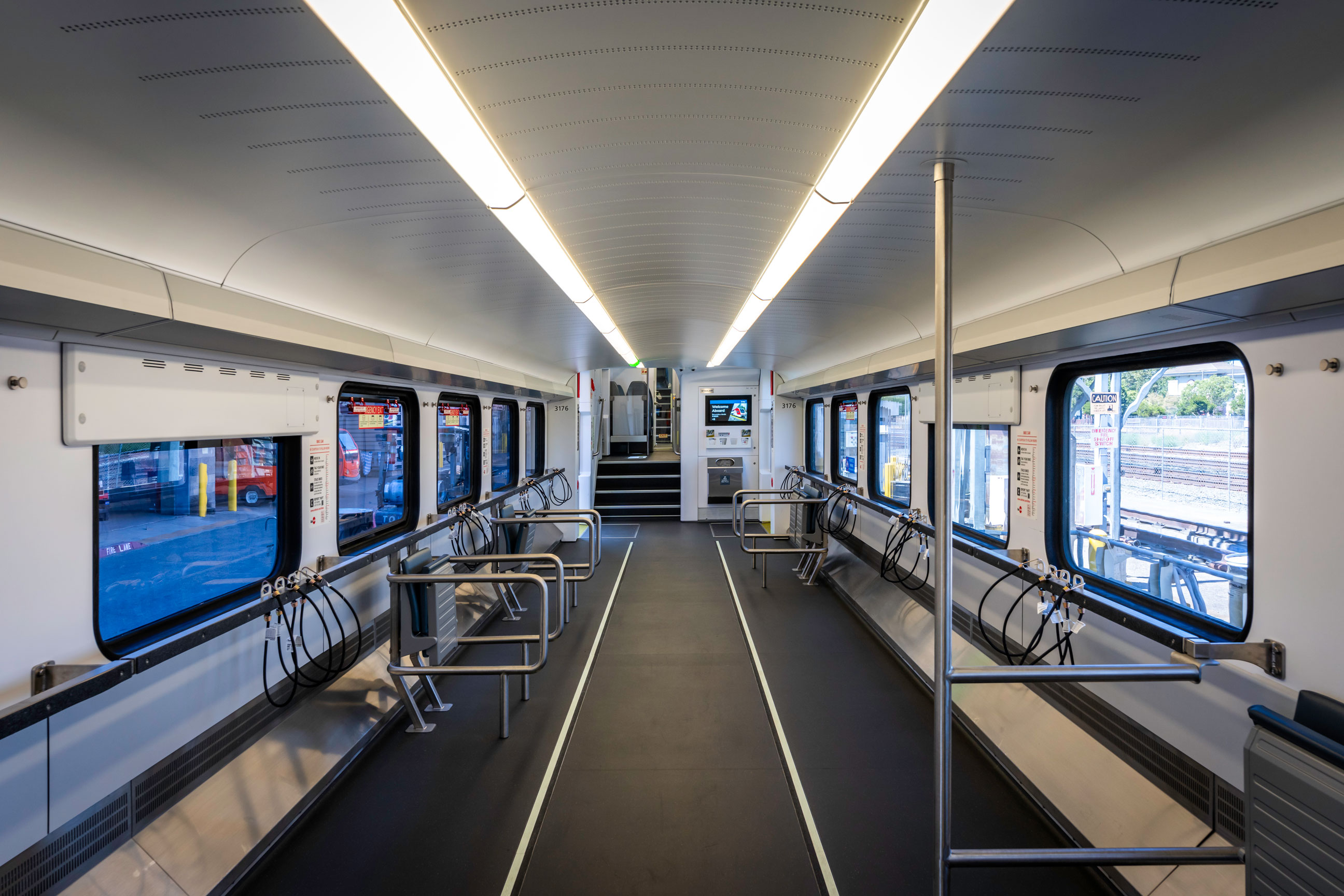
Can e-bikes be charged in bike cars? Can scooters be charged using seat outlets?
The outlets are designated for charging laptops and cell phones. Please refrain from using them to charge scooters or e-bikes.
Can you explain how the new process will work for wheelchair users to ride the electric train?
-
Where to wait on the platform for the electric train? Boarding the new electric trains with a wheelchair or other mobility device will be similar to boarding the current Bombardier trains. Please wait in the designated area on the platform.
-
How to get the attention of a conductor for assistance at stations other than 4th & King or San José? Please wait at the blue boarding assistance square painted on the ground for assistance.
-
Will we need to rely on platform-based lifts, or do the new trains have built-in lifts similar to the California Cars on the Capitol Corridor? The new trains do not have built in lifts, so the designated platforms are for boarding. Please wait at the blue boarding assistance square painted on the ground for assistance.
-
Are there any future plans to create level boarding with the new trains? Level boarding is a future goal of Caltrain which will require additional funding and planning. The new electric trains will not preclude level boarding at a future date.
Do the electric trains use automated announcements or still use a person's real voice?
Most announcements are automated (station stop, direction). There are manual announcements from conductors for other information, including special service and delays.
Will the electric trains be silent while dwelling at a stop? How much quieter is it compared to an idling diesel train?
Yes, they will be quieter while stopped, but not silent.
In addition to the flip seats are there luggage racks/other places to store oversized baggage?
Electric trains have under-seat storage and overhead racks.
Will we ever see variations of paint schemes on the electric trainsets?
There are no plans at this time for a new paint scheme, but train wraps for promotional purposes are possible.
Infrastructure
Are there plans to expand electrification to Gilroy?
Caltrain is in the process of acquiring battery-electric trains (BEMUs), which would allow the trains to leave the powered section of the tracks and continue to Gilroy using a battery. Learn more about the BEMU plan. Caltrain does not own the tracks south of Tamien, which is why they weren’t included in the electrification project.
Is it possible to increase the number of bike cars during busy commute times?
Caltrain will run 7-car trainsets at launch, there are no plans for other configurations at this time. Caltrain has greatly expanded its bike parking options throughout the system which should reduce demand on the bike cars.
Will service eventually go up to 110 mph or will it stay at 79mph?
The new trains are able to travel at 110mph, but additional track work (straightening, maintenance) would be required to go that speed. There are no current plans to increase the max speed allowed on the Caltrain corridor.
Are there plans to incorporate renewable energy sources into the electric power supply for Caltrain?
Yes, Caltrain will prioritize renewable energy to power the system.
If you have any more questions or concerns that were not covered in this FAQ, please reach out to Customer Service at 1.800.660.4287. Hours M-F: 7am-7pm and Weekends & Holidays: 8am-5pm
